I am grateful to Milky Man Shan Cheung, Administrative Coordinator at the Chinese Opera Information Centre, and Phil Olsen of Beard Team USA for their help in acquiring research materials and images for this paper. I would also like to thank the National Library of China for the use of its images from the Great Peace Album of Opera Faces, which they kindly made available.
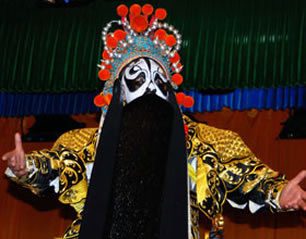
My old teacher would try to conceal his humanity with affected cynicisms such as “you can be more certain about what you discover by chance than what you reach by design.” So it would have pleased him that a chance exposure to Classical Chinese Opera, when on vacation in China last autumn, provided a minor observation which took itself, unasked, to one of Charles Darwin’s always major observations, and then led to a complete reversal of one of its conclusions. That an item of art can lead to an unrelated piece of science seems barren as a generality; in this essay, therefore, I have charted the details of a personal journey between them, to show the route was both passable and enjoyable, and to encourage others to try it.
The last of Darwin’s four extraordinary books presented his idea that “the expression of the emotions in man and animals” had been achieved by the evolution of innate, universal responses that serve to signal and communicate.1 The book was popular, but controversial; however, it was a timely alternative to Bell’s notion that the expressions of emotion were a God-given gift to mankind;2 and by showing they were shared with other animals, it helped advance contemporary understanding of biological evolution. Emotions, as Darwin called the book, has had a continued importance; and, despite some unresolved differences in study findings and interpretation, the idea that their expression is a universal, innate evolutionary development is now widely accepted.3-19
In humans, most of these expressions are facial, and have been studied extensively, particularly by Eckman’s group,3-8 who classified and measured them in different situations, and concur with Darwin’s original conclusions. They and others have shown that many of these human expressions involve the lower part of the face, with specific and observable shaping’s of the lips and mouth,9, 17, 19 the critical role of which was also shown experimentally with the response to Noh masks;18 it was the fortuitous exposure to a traditional Chinese Opera performance that led to the present reinterpretation of their function.
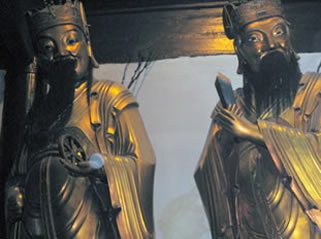
classical Chinese opera
I enjoy European opera, and found my first exposure to its Chinese counterpart difficult. My problem wasn’t the music and the high-pitched voices, which I found no more inaccessible than much of the “modern” repertoire nearer home; rather it was the static formality which I first found curious, and then intriguing; but increasingly as the performance continued, it was the performers’ beards that kept me attracted. They were different from anything I had ever seen, yet it was some time before I understood that difference: it was not simply that they were so luxurious; it was, as I eventually realized, that they started on the upper lip, and consequently always covered the mouth (Fig. 1)!
To confirm this strange appearance, I watched several televised performances of Chinese Opera (which, I confess, I might otherwise not have chosen as evening viewing), and each time found this strange “beard” was the usual adornment of the central male characters—all men of substance, to whom other characters were severely obsequious. I also found the same “beards” illustrated in drawings and sculptures (Fig. 2a and 2b). But since this novel “beard” that grew down over the mouth originated on the upper lip, was it really a beard or a moustache? So my first thoughts were more about semantics than Darwin: when the moustache grows down over the mouth to join the beard what should we call the new joint structure? Would barbe bouche do? More importantly, since we don’t usually see this hairy communion, what maintains the appearance of the moustache beyond the proscenium lip of the Chinese Opera’s stage?


I am still surprised, and not a little ashamed, that as an experimental dermatologist who has done studies of hair and the effect of facial appearance on self image,20, 21 I had never before considered the moustache other than as a social decoration; I had ignored its biology. All body hair and its groups and clusters—scalp, eyebrow, axillary, pubic, etc.—are anatomically, functionally and clonally distinct, with site specificity20, 21 —characteristics that are retained on transplantation—which allows cosmetic surgical repopulation of the front and top of a bald scalp, whose follicles have failed from a dominantly transmitted sensitivity to androgen, by transplanting androgen resistant follicles from adjacent unaffected skin. Hair clusters differ in color, crimp, thickness, shape, direction of growth and hair cycle duration, but not rate of growth; thus the length of uncut hair, a major determinant of appearance, is set by follicular cycle duration20; thus eyebrows are shorter than scalp hair because they are shed after three months growth, and scalp hairs after three years. But the reason the moustache does not cover the mouth as in the Chinese Opera, is that it is trimmed or treated with an adhesive to make it lie across the lip, beyond which it will grow to considerable length (Fig. 3), or if left flow down the side of the face to or below the jaw. Belief that the moustache can be “trained” to lie horizontally by the repeated positioning across the lip, is a quaint horticultural misconception: the direction of hair growth is permanent; it is dependent on the position of the follicles in the dermis, and can only be changed at that site, as transplant surgeons know to their cost. So the message I eventually extracted from the Chinese opera is that if the moustache is left to itself, it will grow down and cover the mouth, then join the beard to form a barbe bouche (Fig. 4).
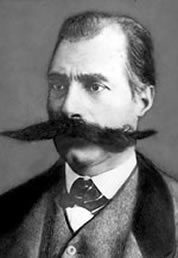
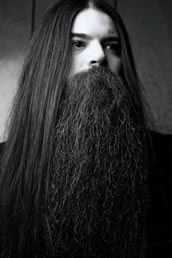
My wife let me know quite forcibly that she considered this conclusion tedious, obvious, and irrelevant, and hadn’t merited the disturbance of an aesthetic experience; she would continue to paint beards and moustaches, particularly in older men (Fig. 5), and I should stop worrying about whether or not they were trimmed. But I persisted, albeit silently, because I sensed that the trivial problem of moustache growth could be covering a much bigger problem; the inexplicable feeling—a hunch, if you like—of an underlying “something” is as commonplace in science as in art, and just as essential. But it was some time after we left the opera that I began to see what that something might be: in early humans, who had not yet developed cutting instruments (let alone cosmetic moustache waxing applications!), there would be nothing to stop the hair of the upper lip from growing down and covering the mouth; so what on earth could be the evolutionary purpose of the barbe bouche, especially as it would make eating and drinking more difficult, and could pose a health risk from microbiological growth on retained food?
As the evolutionary trend is for loss of hair (more advanced in some populations22), it is unlikely that the moustache and beard cover would have been less in early humans than now. Furthermore, any evolutionary “intention” to leave a gap in the moustache so that the mouth was not completely covered by it, could only have been achieved by limitation of follicular duration, absence of central lip follicles, or a laterally directed hair growth as in the eyebrow; but each of these options is excluded by simple inspection (although the great terminal length of an untrimmed moustache may be achieved more from its sides than its centre). Thus we are forced to conclude that the moustache evolved not to avoid the mouth, but, on the contrary, to cover it and join the beard below, as in the Chinese Opera. What an uncomfortably curious conclusion! But in science as in art, one measure of a conclusion is that its leads to another question; in this case, what could be the purpose of this cumbersome, defacing, downward extension of the moustache? At last, and in compensation for the indulgent reader, the path takes us from the art of Chinese opera to the science of Charles Darwin.

Bobbie Shuster (b. 1928)
Petticoat Lane, London, England
Darwin’s view that “the expression of the emotions in man and animals”1 is a universal, innate evolutionary form of communication, has since been taken up widely. In humans most of these expressions are facial1 but as many involve the mouth and lower face,3-7,9,17,18 their recognition and communicatory value would have been much reduced when facial hair would have grown uncut at the time of early human evolution. So does this invalidate Darwin’s observational conclusions on the expression of emotions in humans? I returned to what Darwin had written with a heavy heart—I didn’t want him to be wrong.
But sadly Darwin’s Emotions can be criticized in its own right and by comparison with his other works—let alone by contemporary standards. That much of the evidence in Emotions is anecdotal is understandable, as it is a product of Darwin’s times; but, unlike his other studies, these are often from secondary sources, rather than his own, always astute, observations; consequently he is less able to mount a critical search for findings which could refute or support his thesis. For example, the single, simple piece of evidence that would prove or destroy the idea that facial expression of the emotions are an inbuilt universal, would be to observe whether they occur in the congenitally blind. Yet, disappointingly, instead of a personal study, or some other attempt to confirm the outcome of this vital observation, Darwin merely provides a single anecdotal sentence, given almost as an aside, to be read less as evidence in support of the theory than the consequence of its operation: “The inheritance of most of our expressive actions explains the fact that those born blind display them, as I hear from the Rev. R.H. Blair, equally well with those of gifted sight.”
A further problem is that Darwin continues to use the analytical logic of simple cause and effect, that had proved so powerful in his previous endeavours, but which is too coarse a tool for human psychology, the new field he had inadvertently entered; he wasn’t to know that this was a field where interaction is often more through an abstruse web than by simple cause and effect. But, despite the many areas which can now be seen as deficient in Emotions, Darwin still hit his target, and the many studies done since his time, including on the congenitally blind, and the twin and “racial” studies,12-14 have confirmed his conclusion that the expressions of emotion are indeed innate and universal, as would be expected of evolutionary developed characteristics. So if Darwin had been a little slack in his study of the Emotions, as Mendel seems to have been with his sweet peas, his insight, likewise, has since been justified.
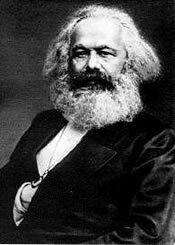

But since Darwin was right about the facial expressions of emotion in signalling and communication, what, then, was the reason for their concealment by facial hair? If the growth of the moustache down across the mouth was maintained in early humans, despite its inconvenience for ingestion and the risk of microbiological contamination, then the loss of signals of emotion must have served a purpose greater than its disadvantages. So what could that purpose be? One of the tenets of both art and science is that definition of a question is the first step to its answer; could the Chinese opera have provided both? All the characters in the opera whose lower face was concealed by a barbe bouche were authoritative and senior, and the other characters were clearly in awe of them; so could this explain the prehistoric function of this curious mask of facial hair?
The beard and moustache appear after puberty and increase in bulk slowly, only reaching a peak by the mid-twenties, when, if left untrimmed, they would completely cover of the lower face, from the upper lip below the nose, across the lower third of the naso-labial folds, to the lower malar region, and on to join the side-burns below the scalp. As early humans lived only a few years into their thirties23 it would have only been the “seniors” in whom the fully developed moustache-beard covering obscured the signalling of emotions. But the barbe bouche achieves more than just concealment: if a photograph of the lower face is covered by an area corresponding to an untrimmed barbe bouche, in addition to concealment of an emotion indicated predominantly by the mouth and lower face, there is also, and perhaps more importantly, a worrying ambiguity of the underlying emotional expression. For example, what is left of a smile doesn’t read with certainty—the eyes still smile, and the curve of the shortened naso-labial folds could be a smile . . . but then, maybe not. This ambiguity adds a disturbing uncertainty to the simple concealment of emotional signals essential to social interplay; did this combination separate the elders and help them establish a degree of social control, and perhaps secure sexual selection? The fact that beards and moustaches were trimmed in later eras of human life would not obviate the possibility of this original function; it would simply imply its maintenance no longer outweighed its disadvantages. Of course, moustaches could not be trimmed until suitable hair cutting tools were developed, but once they were available, the development of speech may well have been hastened the demise of the barbe bouche, because speech recognition is partly dependent on the observation of the mouth as words and sounds are made.19
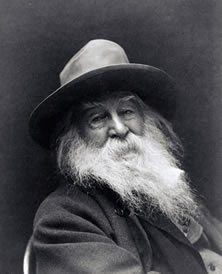
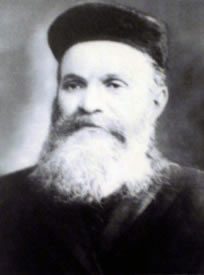
great-grandfather
The concealment and derangement of facial expressions by the barbe bouche does not vitiate Darwin’s conclusions. On the contrary, it is because the facial expression of emotions is such a powerful signal, that the very concealment and ambiguity of these expressions creates a new signal, one associated with seniority, and perhaps creating respect, if not fear, as in the Chinese opera. Interestingly, the very perversity of signalling by concealment and confusion of its expectation is not far from the “principle of antithesis,” the second of the three core principles with which Darwin characterized the expressions and gestures of emotion. It also interesting that the present conclusions have been reached by the same methods of logical extrapolation of observation used by Darwin in his Emotions, and that, likewise, they can only be taken further by experiment.
Now that exhibition of facial hair is much less fashionable than in the past, it is perhaps unsurprising that recent students of the facial expression of emotions have been unaware of its effects; but what of Darwin, whose magnificent face was so well decorated by moustache and beard (Fig. 6a)? Perhaps the argument works equally in reverse, and that he failed to make the connection because the hirsute facial appearance was too commonplace to be noticed (Fig. 6 b,c,d), like Chesterton’s murderous postman. And that, perhaps, is how art can connect with science: by presenting things differently, it makes the commonplace uncommon, and therefore more likely to be seen. It was that essential function of art that allowed me to “see” the moustache for the first time and understand its concealing communicatory function as it grew into a barbe bouche; how I wish Darwin had been with me at the Chinese opera.
Figures
- Fig 1. The typical appearance of the moustache-beard (barbe bouche) in classical Chinese opera (by kind permission of Milky Man Shan Cheung, Administrative Coordinator, Chinese Opera Information Centre). The hair is suspended from a former that hangs over the ears and lies across the lower part of the upper lip, from which it extends down over the mouth to a variable and often considerable length.
- Fig 2. (a) Sculptures of two characters as seen in classical Chinese opera; these were seen and photographed in the Jade Buddha Temple, Shanghai. The beard which starts on the lower lip, grows down to cover the mouth. (b) Two paintings of performers wearing typical examples of the Chinese Opera Moustache Beard (for which the acronym COMB would not be inappropriate), from the “Office of Great Peace Album of Opera Faces” painted 1851–74 (World Digital Library).
- Fig 3. Moustache waxed to grow sideways at length. Image of Panayot Hitov. Wikipedia
- Fig 4. A fine example of a barbe bouche. This is Burke Kenny’s free growing, untrimmed beard and moustache which won an award at the World Beard Championships. Kind permission of Phil Olson of Beard Team USA.
- Fig 5. Gouache painting “Old Gramophone Record Player,” Petticoat Lane, London, by Bobbie Shuster.
- Fig 6. Portraits of (a) Charles Darwin; (b) Karl Marx; (c) Walt Whitman; (d) My great-grandfather; (a, b, and c from Wikipedia).
Notes
- Darwin C. The expression of the emotions in man and animals. 3rd Ed., HarperCollins, London, 1998. The first edition was published in 1872; this edition incorporates Darwin’s notes and commentaries by Paul Ekman.
- Bell Sir C. The anatomy and philosophy of expression, as connected with the fine arts. 6th Ed., Henry G Bohn, London, 1872.
- Ekman P, Friesen WV. Constants across cultures in the face and emotion.1971. J Pers Soc Psy; 17: 124–129.
- Ekman P, Oster H. Facial expressions of emotion. Ann. Rev. Psychol. I979. 30: 527-54.
- Ekman P. The argument and evidence about universals in facial expressions of emotion. In: Wagner H, Manstead A Handbook of social psychophysiology. 1989 Wiley NY.
- Ekman P. Facial expressions of emotions: New findings, new questions. Psychol Sci.1992; 3: 34–38.
- Facial Expressions, Ekman P. Chapter 16 in Dalgleish T, Power M. Handbook of Cognition and Emotion. John Wiley New York 1999.
- Emotions inside out: 130 Years after Darwin’s The Expression of the Emotions in Man and Animals. Ann NY Acad Sci 2003; 1000: 1–401. (This series of articles reviews and discusses findings in man and other animals).
- Horstmann G, Lipp OV, Becker S I.Of toothy grins and angry snarls.Open mouth displays contribute to efficiency gains in search for emotional faces. 2012.J Vision;12: 1–15.
- Elfenbein HA, Ambady N. Universals and cultural differences in recognizing emotions. Amer Psy Soc. 2003; 12: 159-164.
- Galati D, Miceli R, Sini. B Judging and coding facial expression of emotions in congenitally blind children. Int J Behav Dev. 2001; 25 :268–278.
- Matsumoto D, Willingham B. J. Spontaneous facial expressions of emotion of congenitally and noncongenitally blind individuals. Pers Soc Psy. 2009;96: 1-10.
- Cole P M, Jenkins P A, Shott C T. Spontaneous Expressive Control in Blind and Sighted Children. 1989. Child Devel; 60: 683-688.
- Tracy J L, Matsumoto D. The spontaneous expression of pride and shame: Evidence for biologically innate nonverbal displays. 2008.105; 33: 11655–11660.
- Jack R E, Blais C, Schyns, Scheepers, Caldara R. Facial expressions are not universal. Curr Biol. 2009; 19: 1543–1548.
- Barrett L F. Was Darwin Wrong About Emotional Expressions? 2001. Curr Dir Psy Sci;20: 400–406.
- Russell JA, Bachorowsk JA, Fernandez-Dols JM. Facial and vocal expressions of emotion. 2003. Ann Rev. Psy; 54: 329–49.
- Miyata H, Nishimura M H R, Okanoya K, Kawai N. 2012. PLoS ONE; 7: 1-8. e50280. doi:10.1371. The Mysterious Noh Mask: Contribution of Multiple Facial Parts to the Recognition of Emotional Expressions.
- Munhall KG, Johnson EK. Speech perception: when to put your money where the mouth is. Curr Biol. 2012;22: 190-2.
- Shuster, S. Dermatology in internal medicine. OUP, Oxford, 1978.
- Shuster S. Reason and the Rash 1981. Proc Roy Inst GB; 53: 136-163.
- Garn SM. Types and distribution of the hair in man. Ann NY Acad Sci 1951;53: 498–507.
- Eshe V, Gopher A, Gage T B, Hershkovitz I. Has the Transition to Agriculture Reshaped the Demographic Structure of Prehistoric Populations? New Evidence From the Levant Am J Phys Anthropol. 2004;124: 315–329.
SAM SHUSTER, MB, PhD, FRCP, Emeritus Professor of Dermatology Newcastle University. Graduated 1951 University College London; held posts at UCL, Royal Postgraduate MS, Welsh National MS, and Institute of Dermatology. Officer to a number of learned societies and government bodies; recipient of several awards; contributor to radio, television and lay press. Written textbooks and chapters on dermatology, skin pharmacology, and over 500 peer-refereed papers on skin physiology, disease and treatment. Discoveries include the coeliac syndrome of dermatitis herpetiformis, the fungal cause of dandruff and seborrhoic dermatitis, endocrine control of the sebaceous glands and pheromonal role of MSH, various measurement methods e.g. itch as scratch, systemic effects of skin disease and effect on measured self-image; skin collagen and effect of aging and hormones; and most recently the mechanism of fingerprint maintenance.
Highlighted in Frontispiece Volume 5, Issue 3 – Summer 2013

Leave a Reply